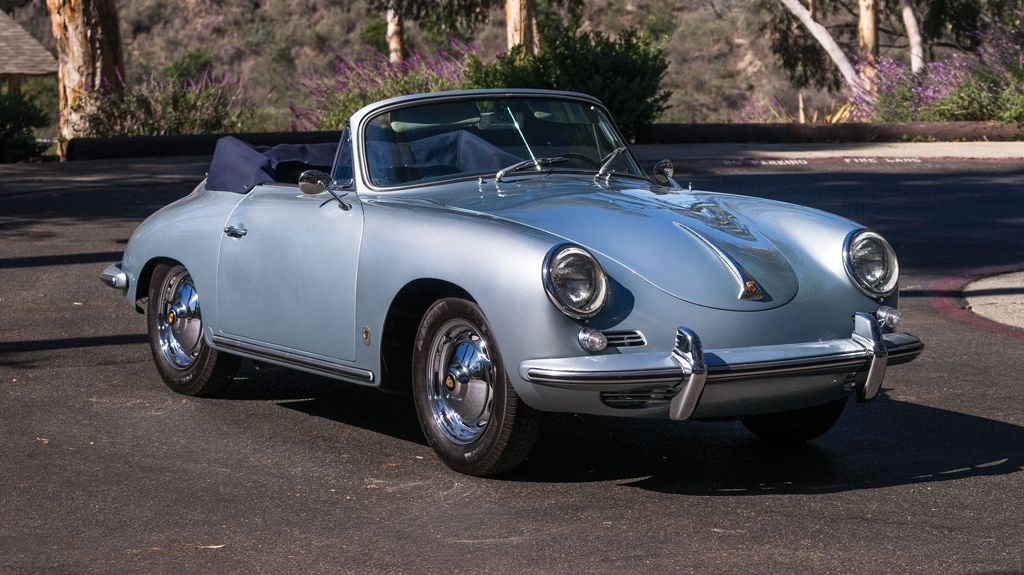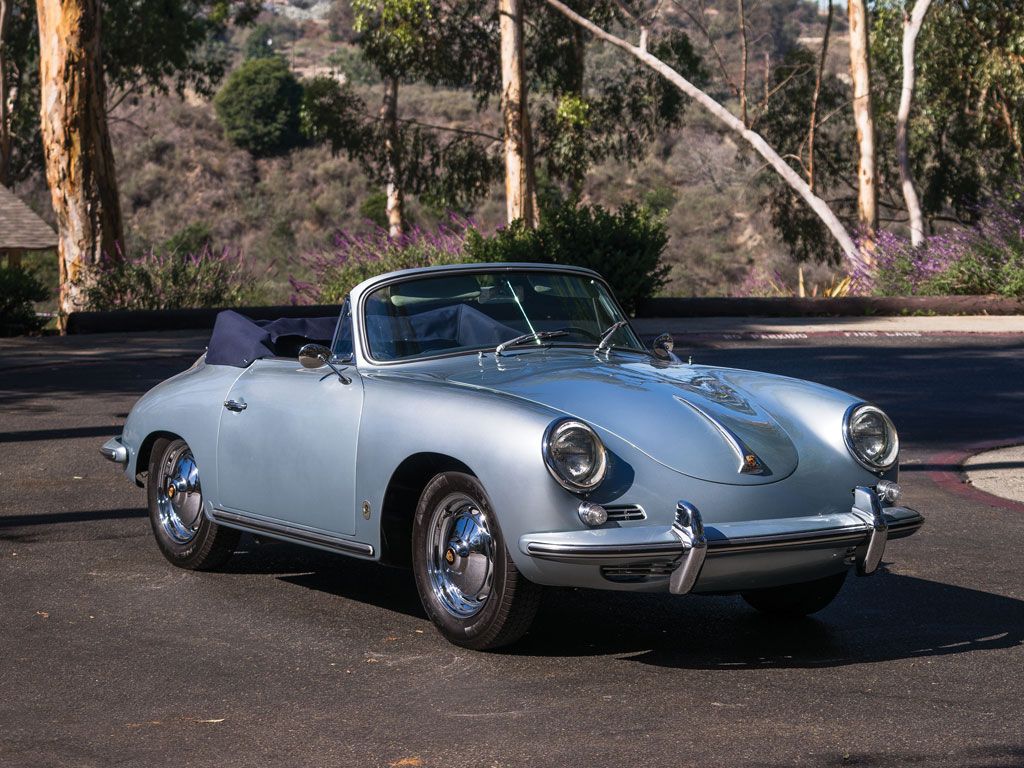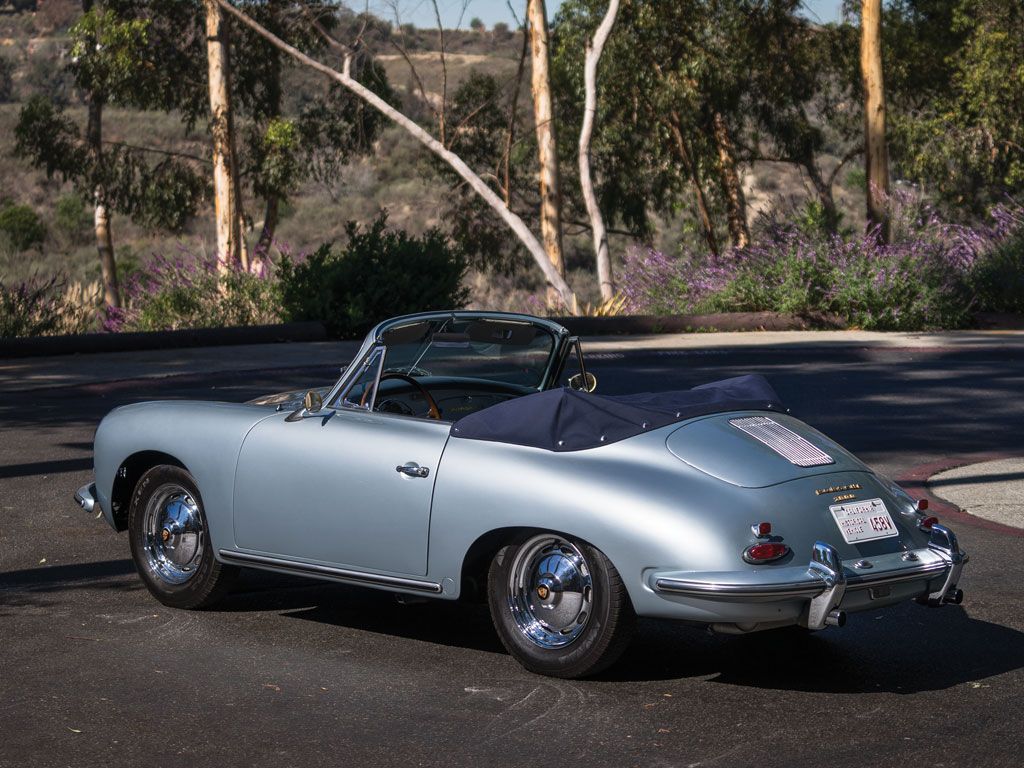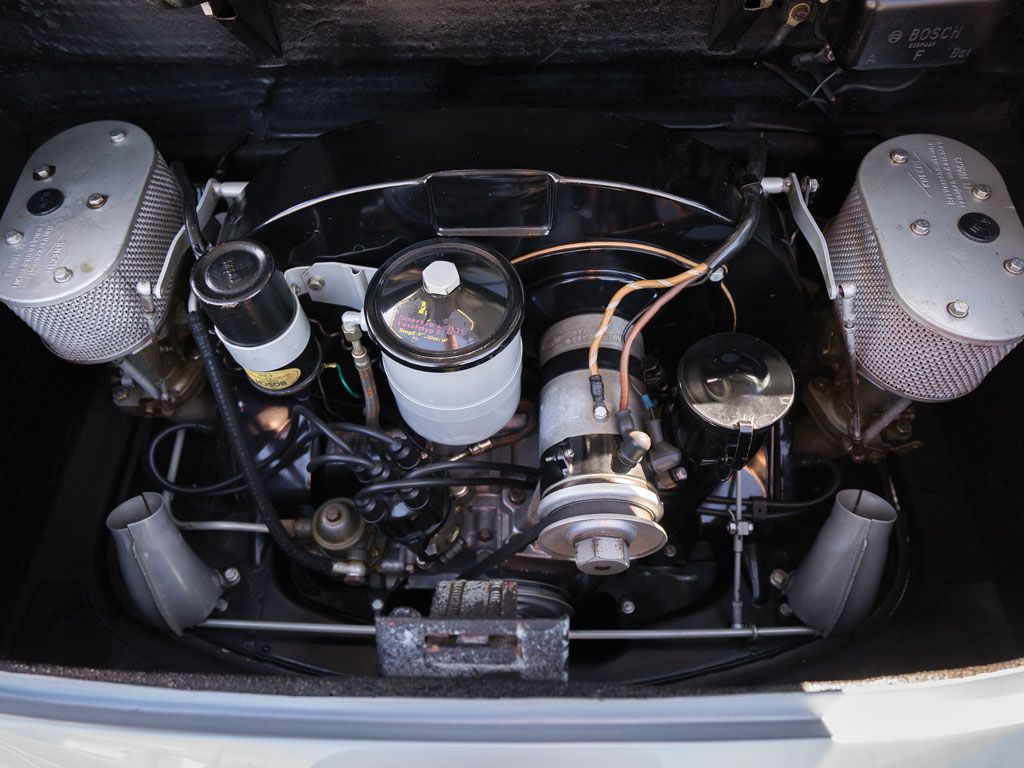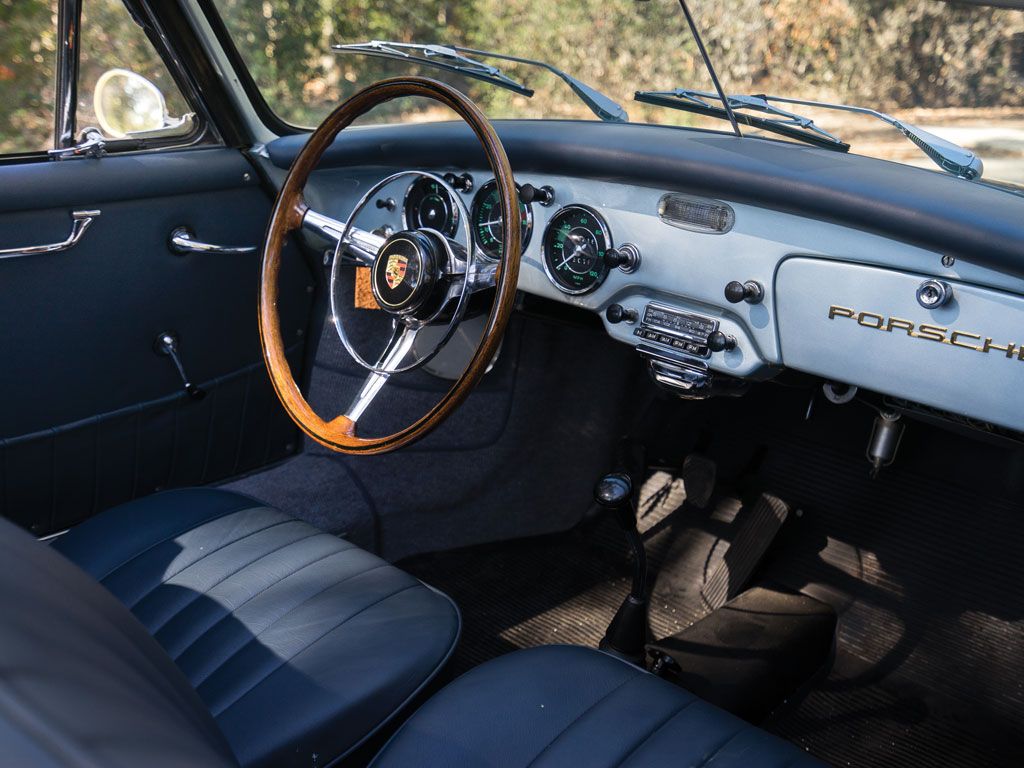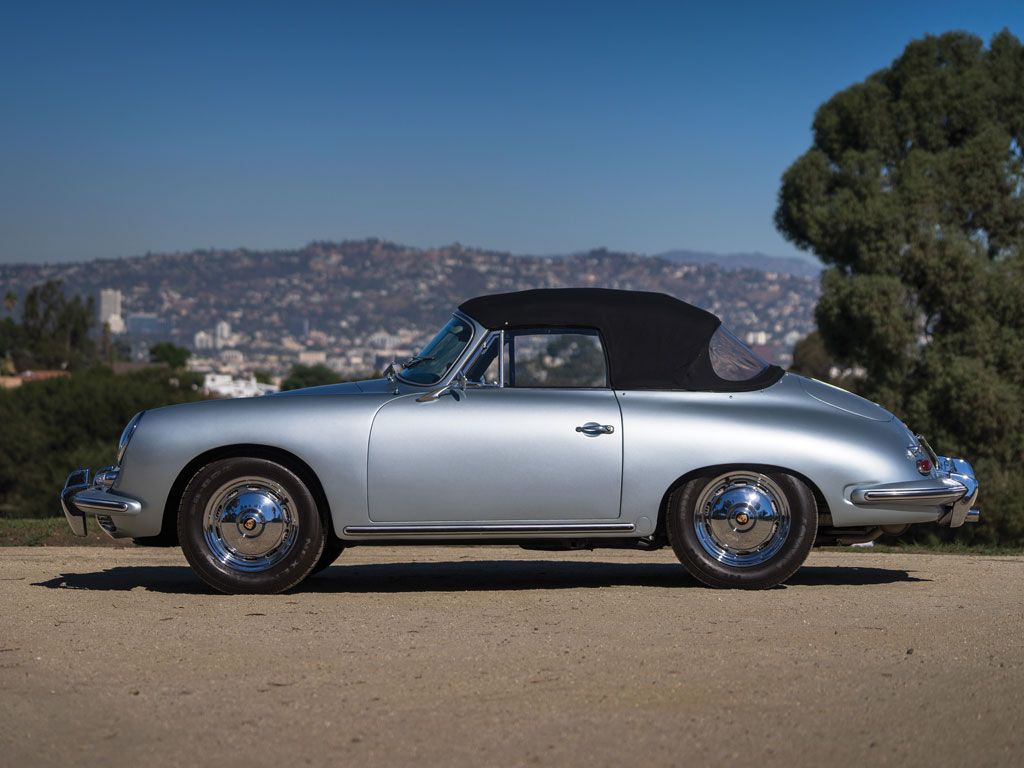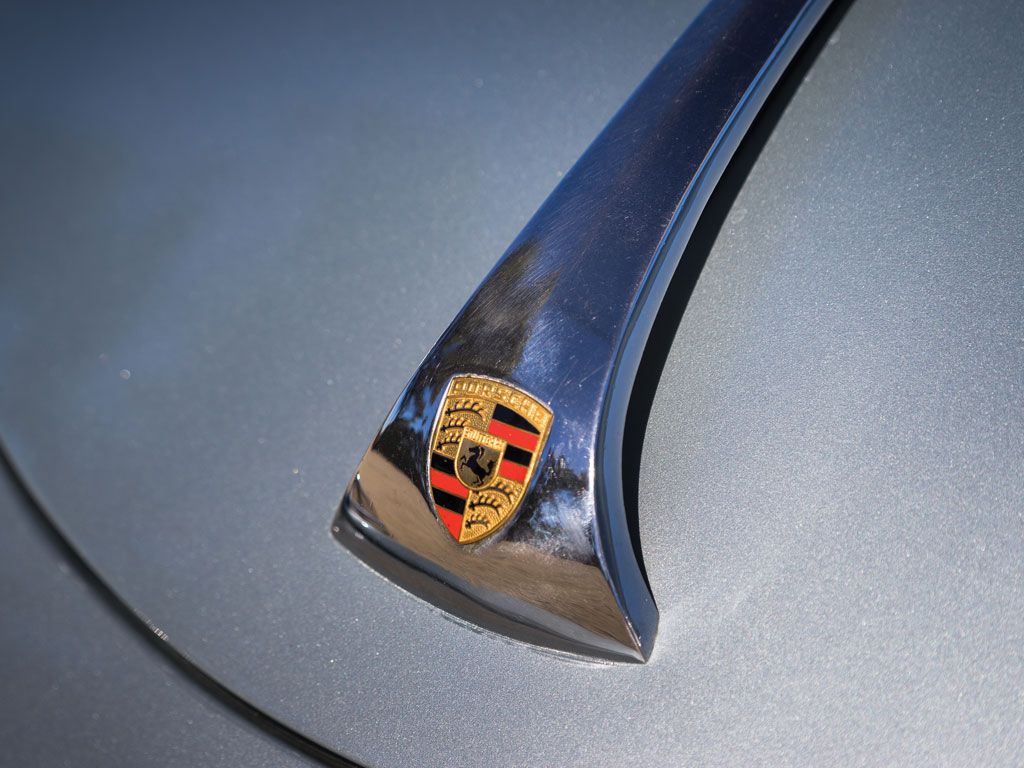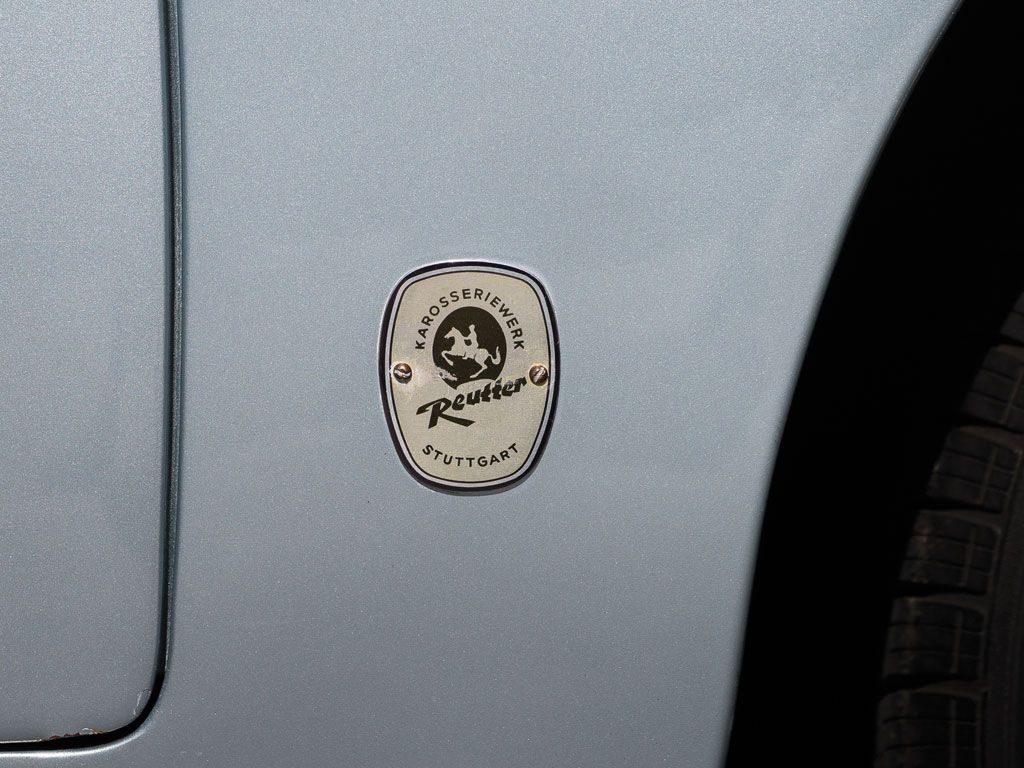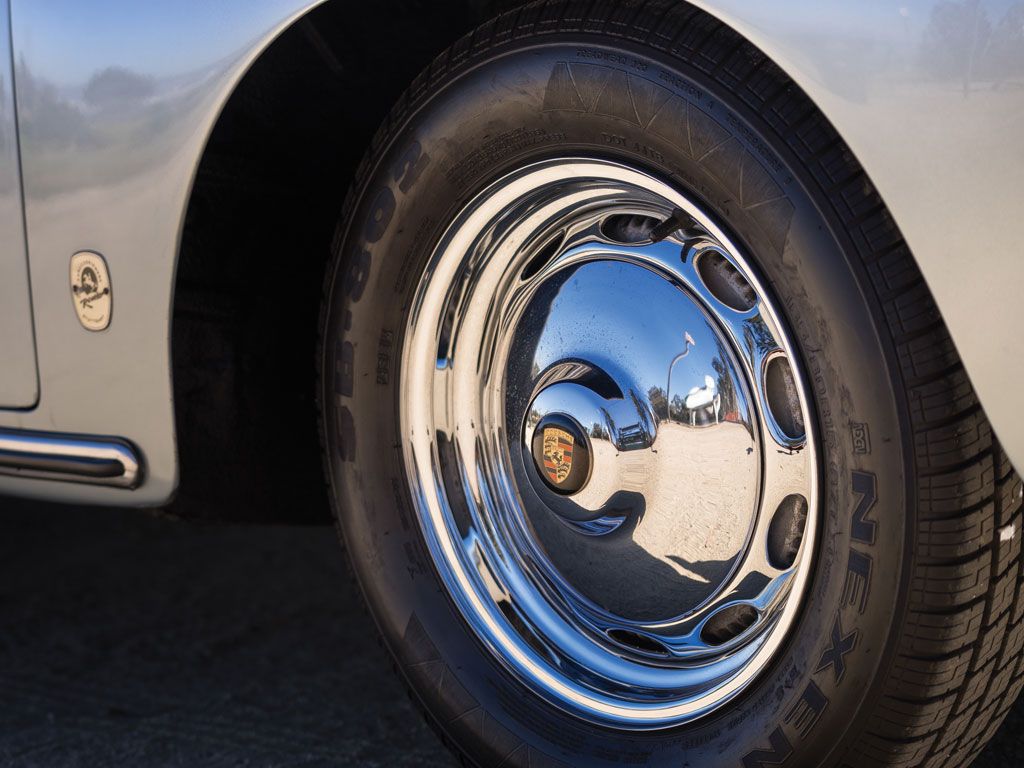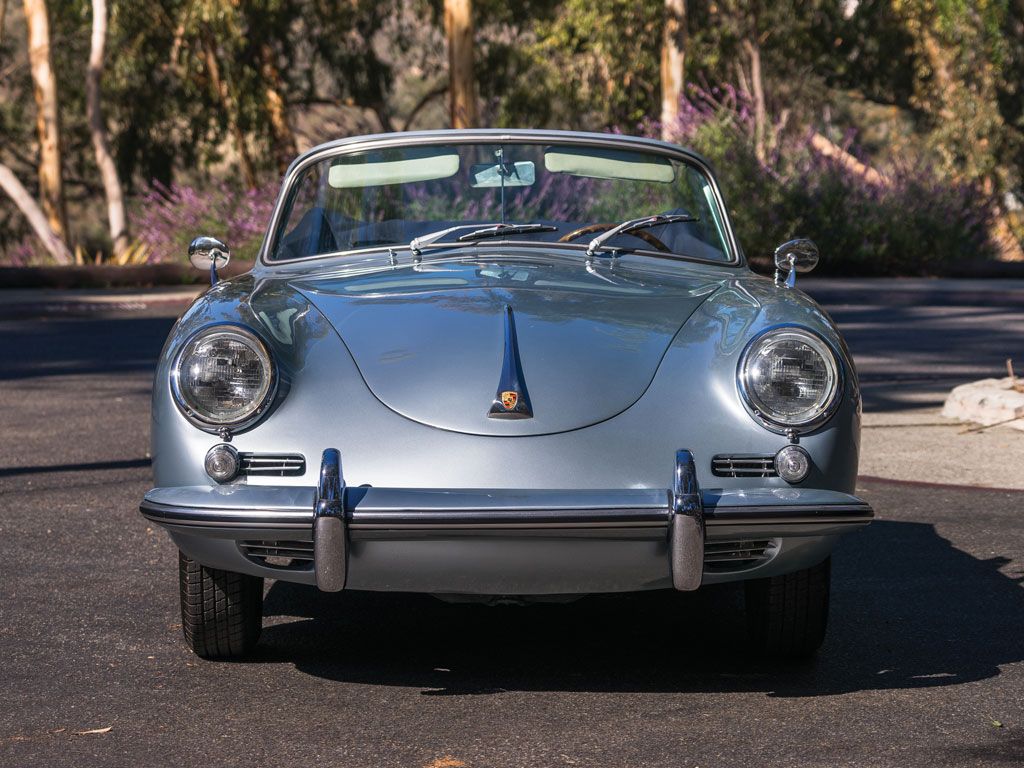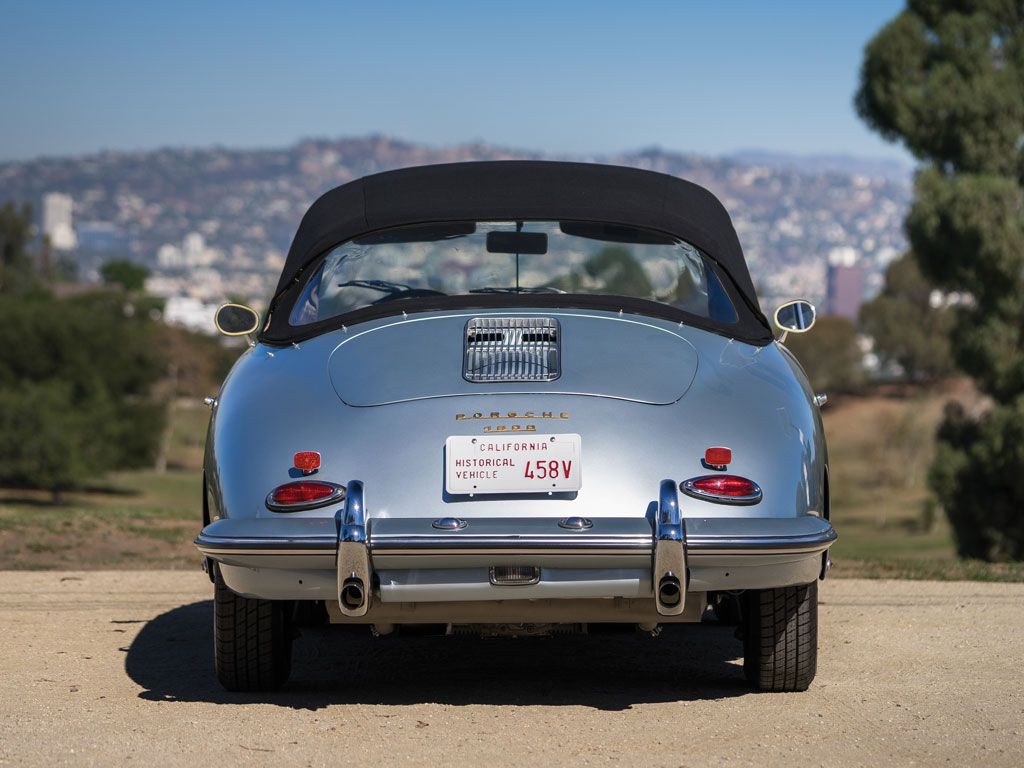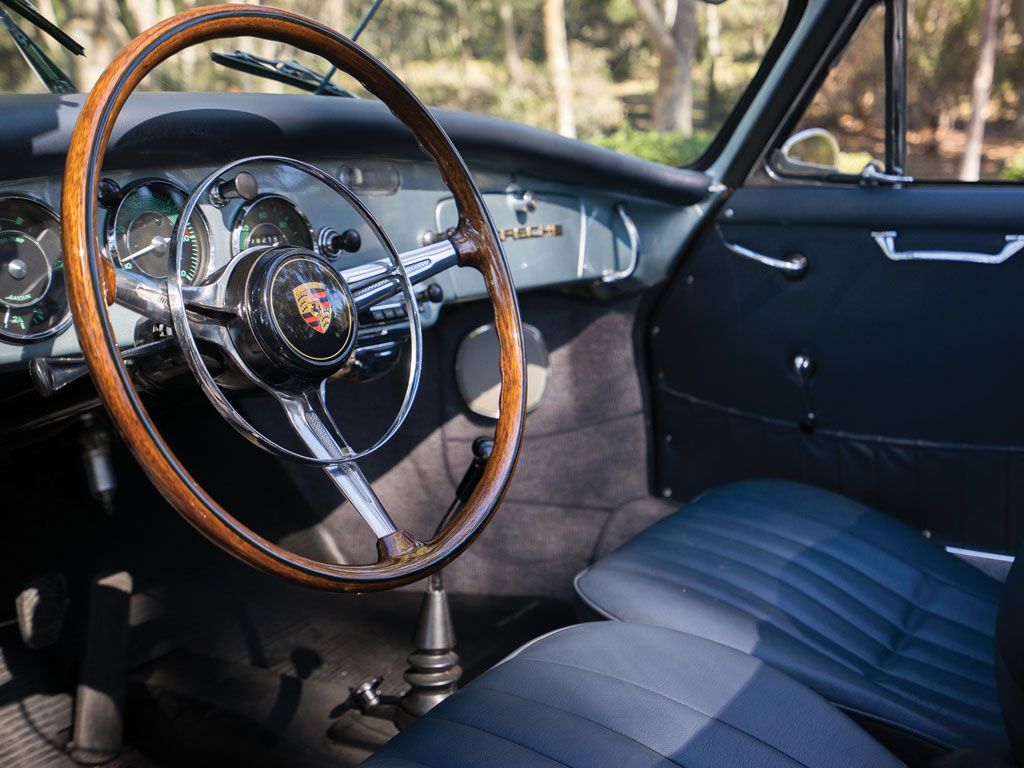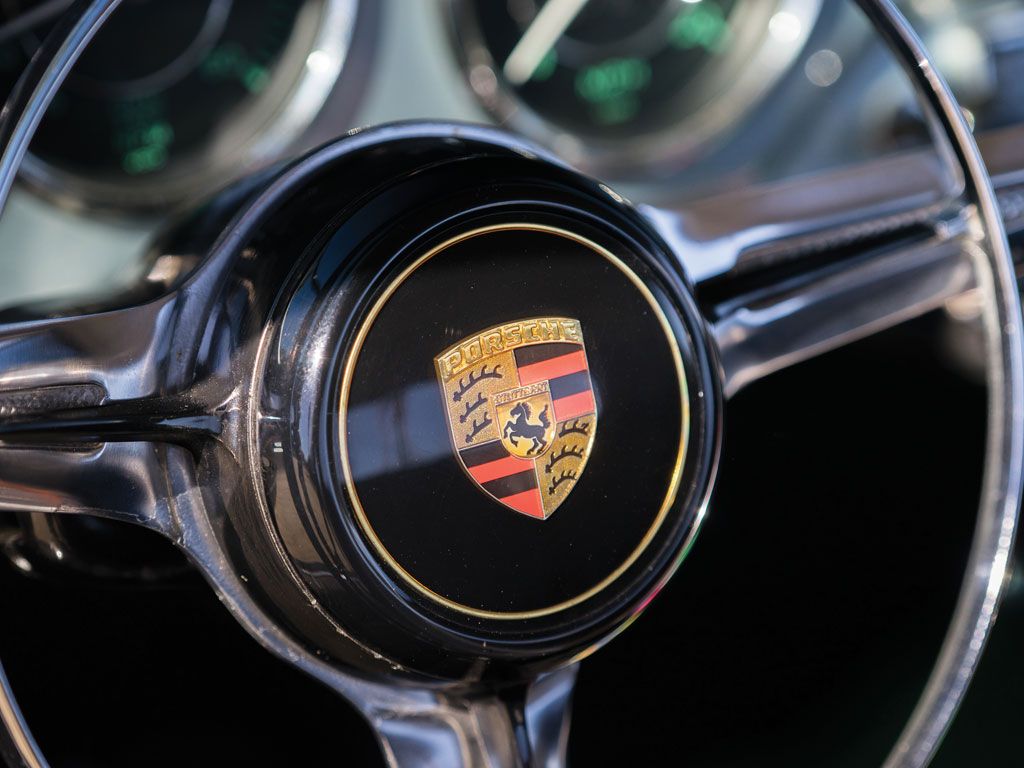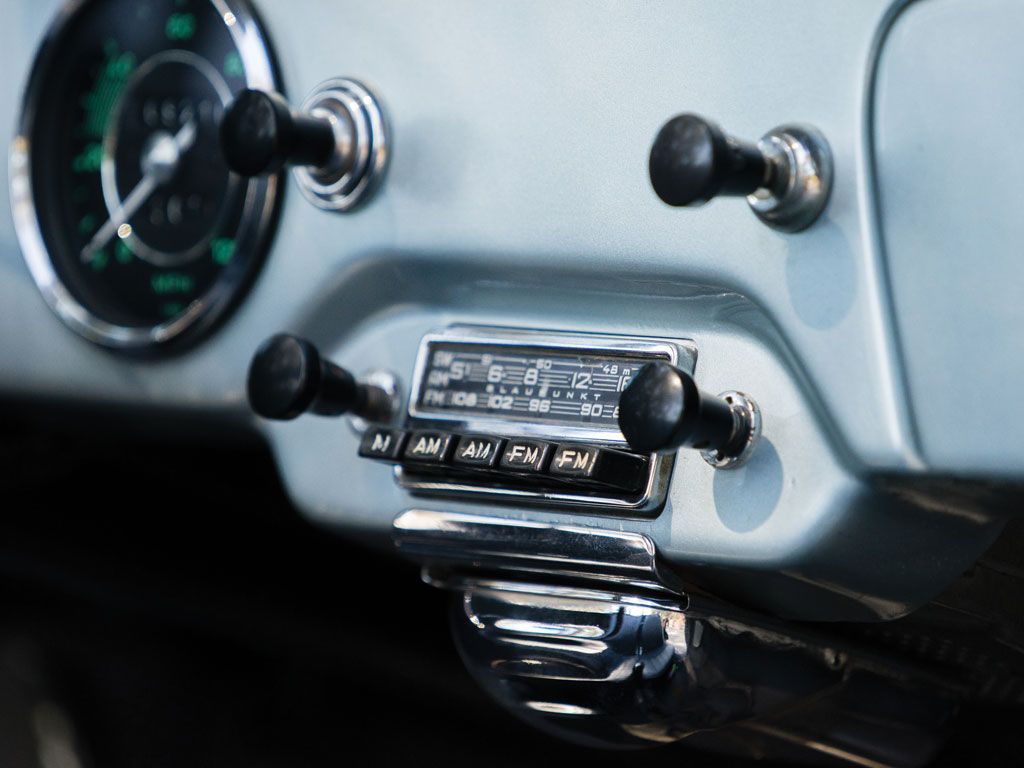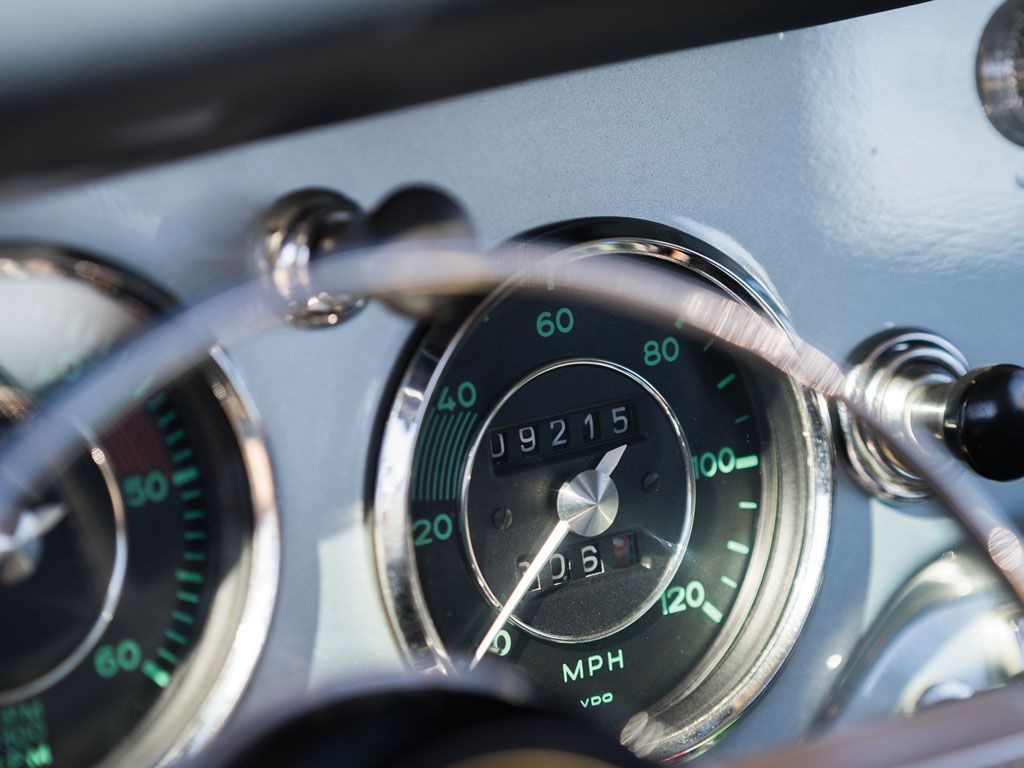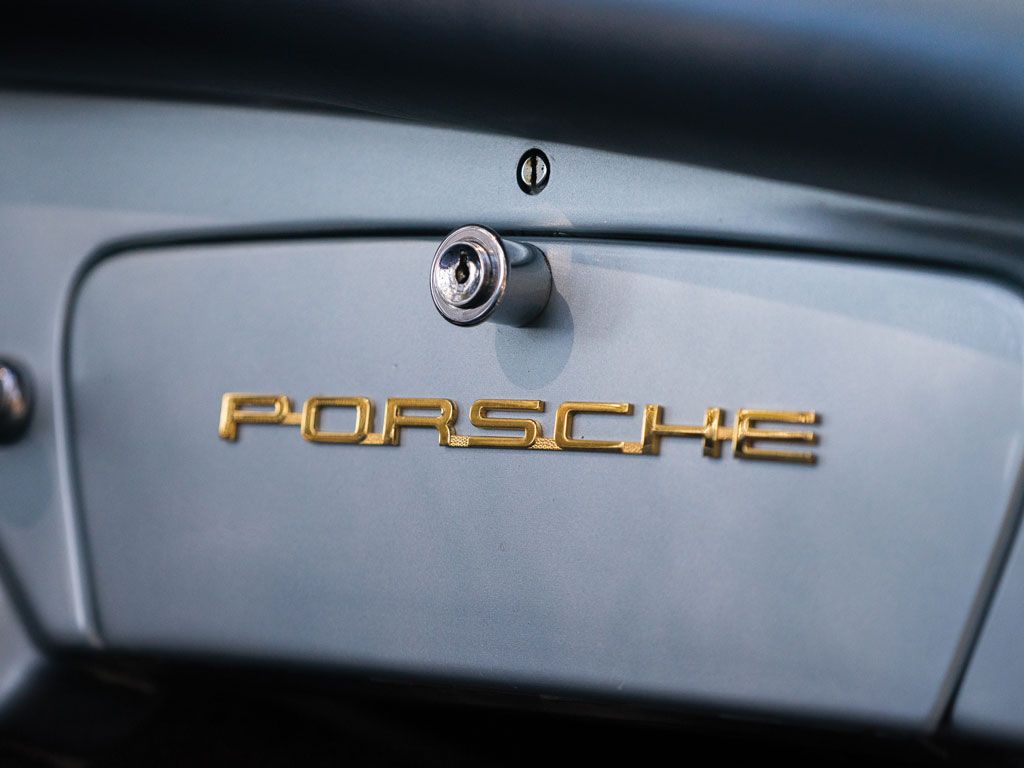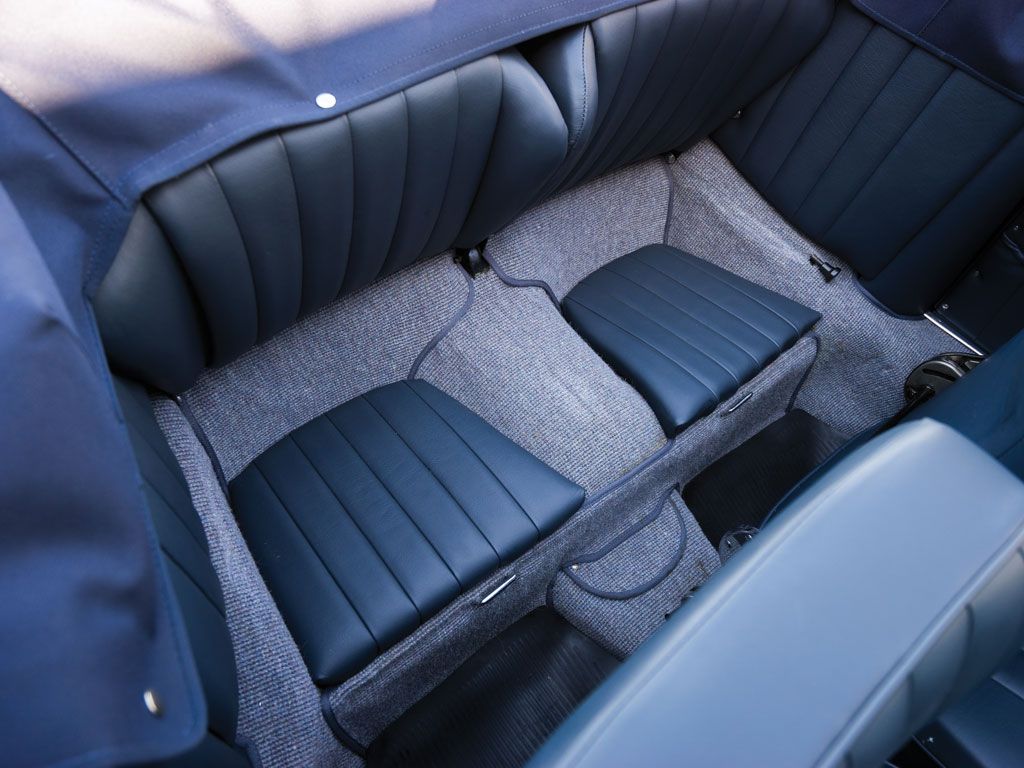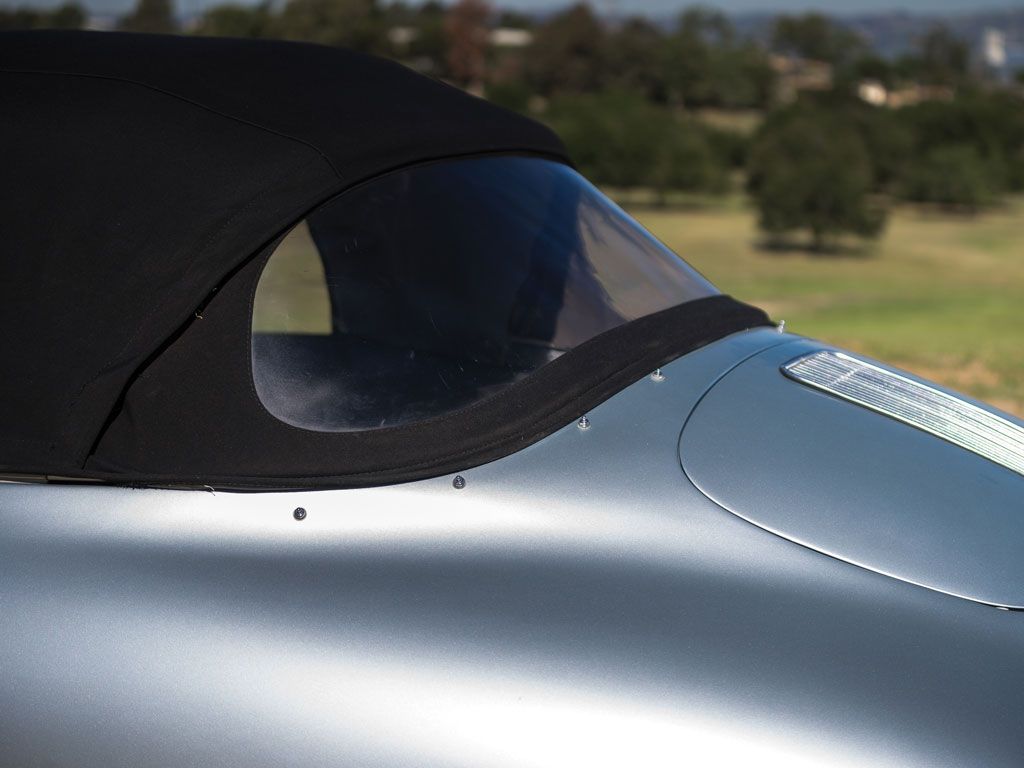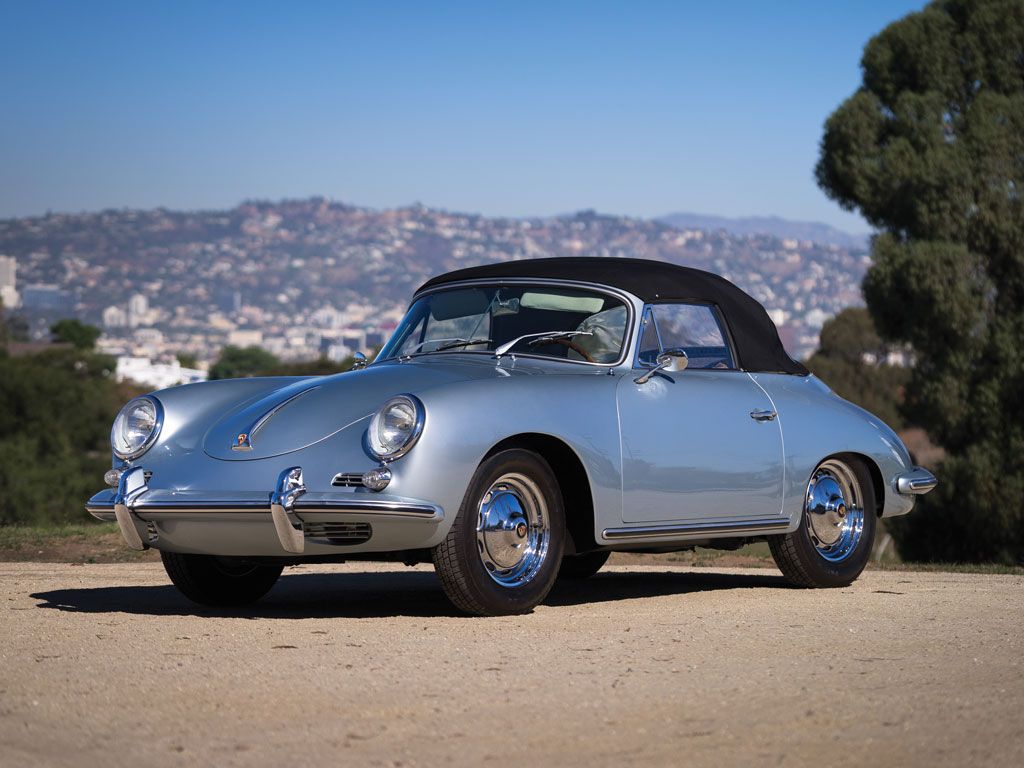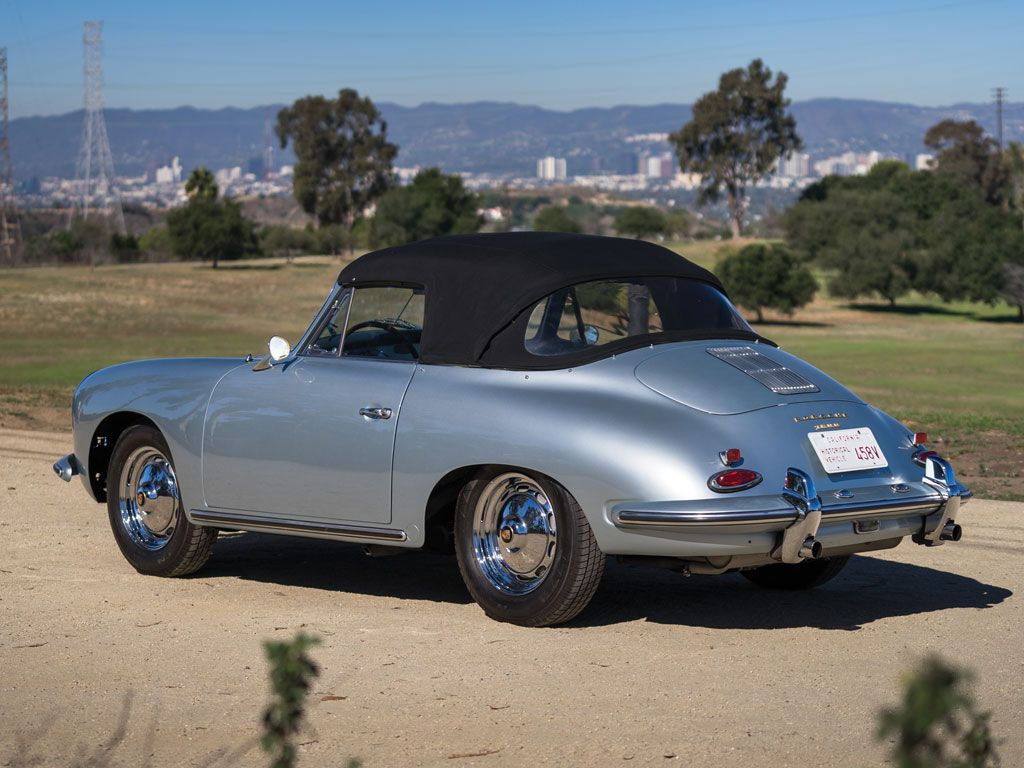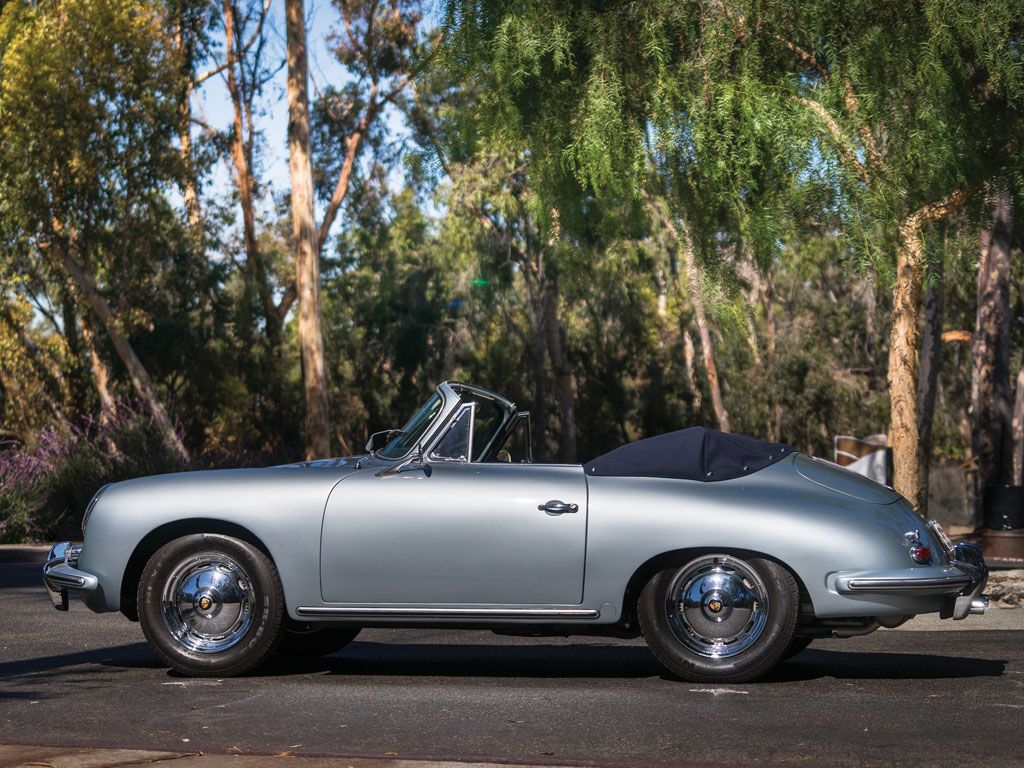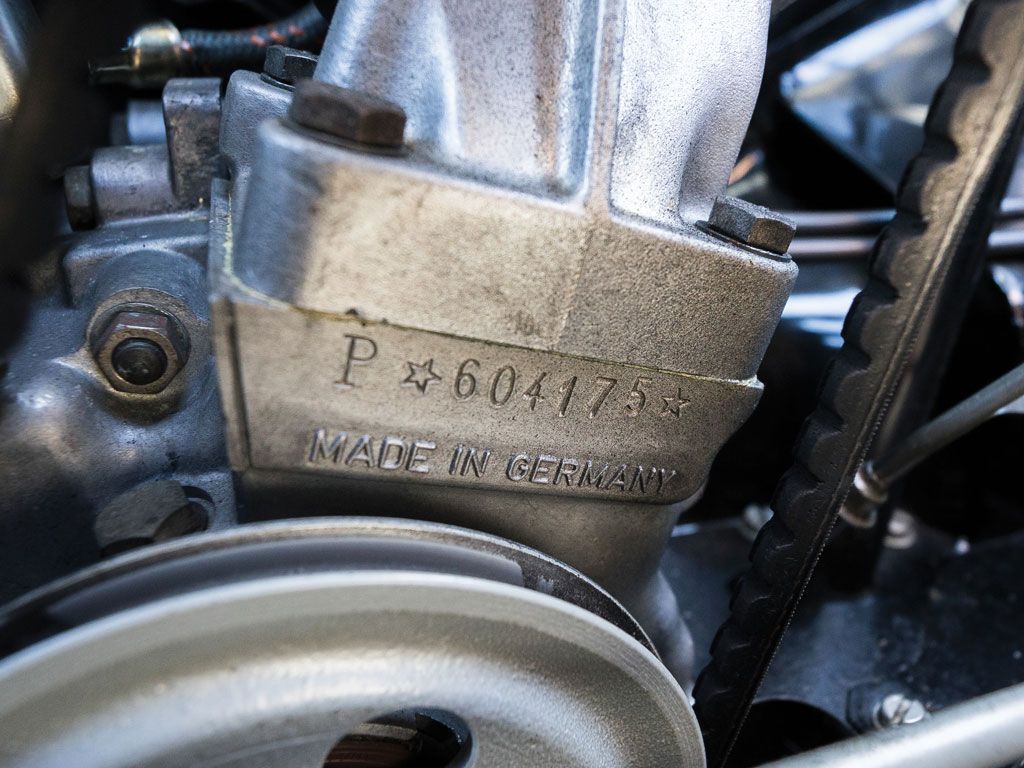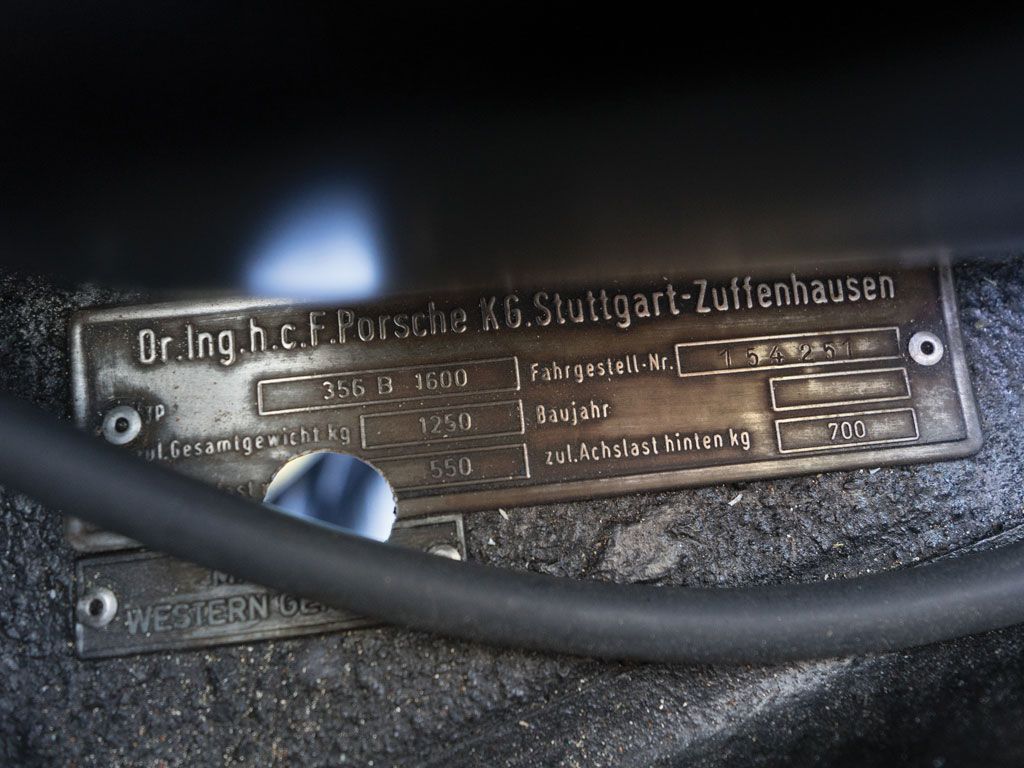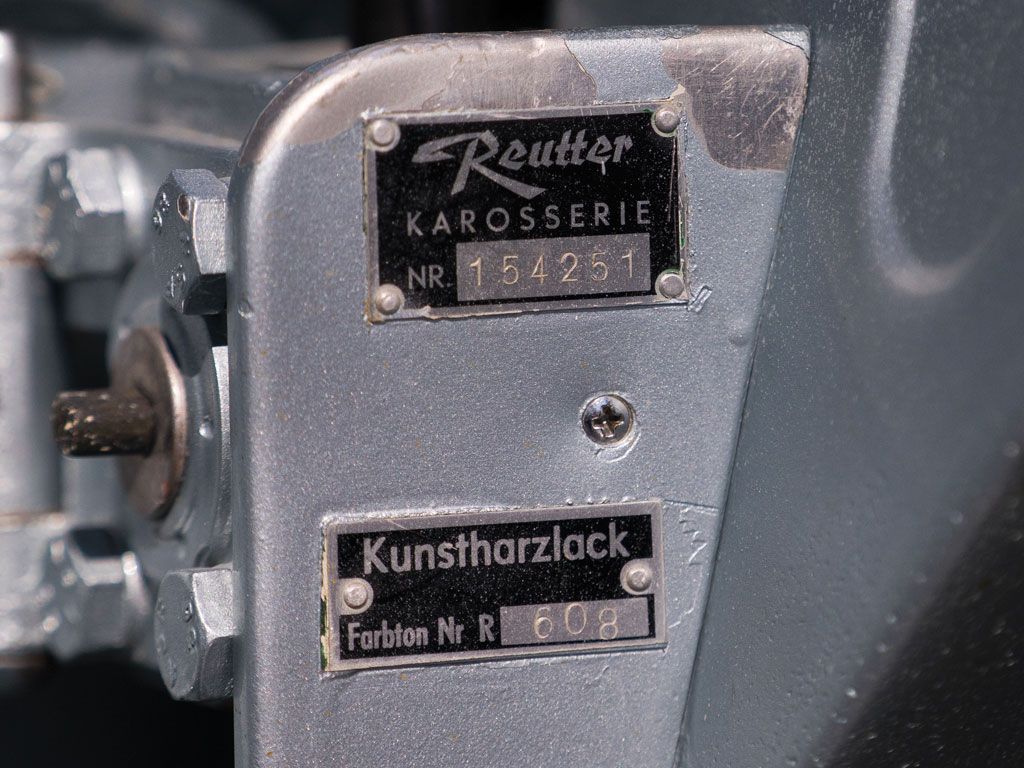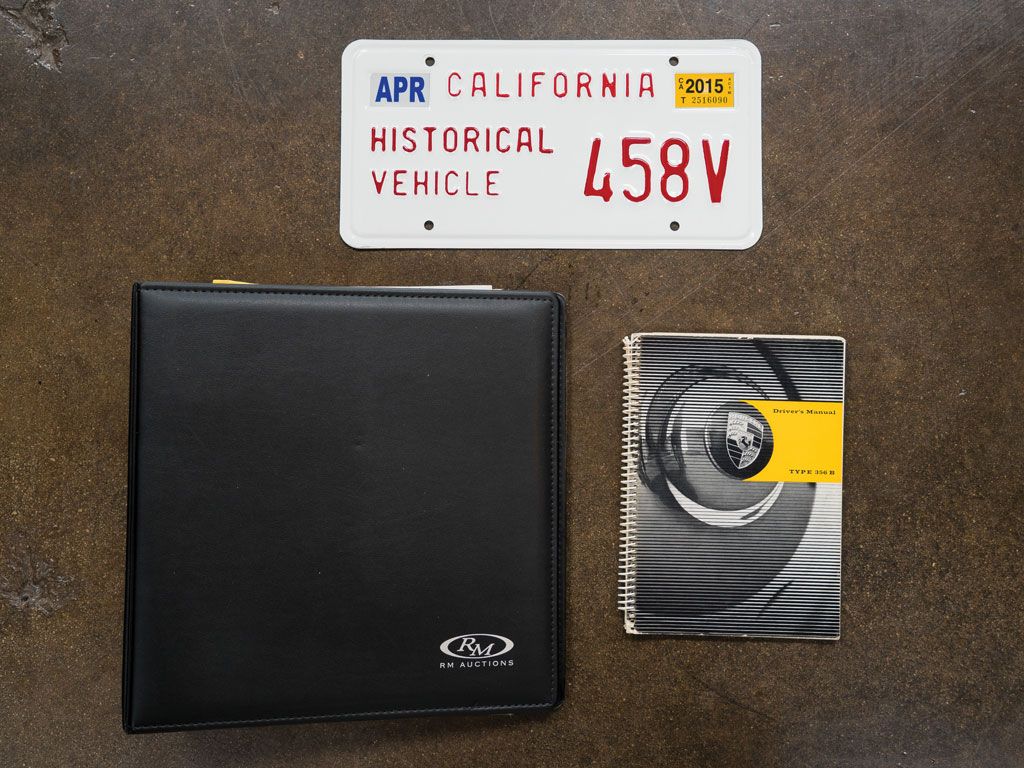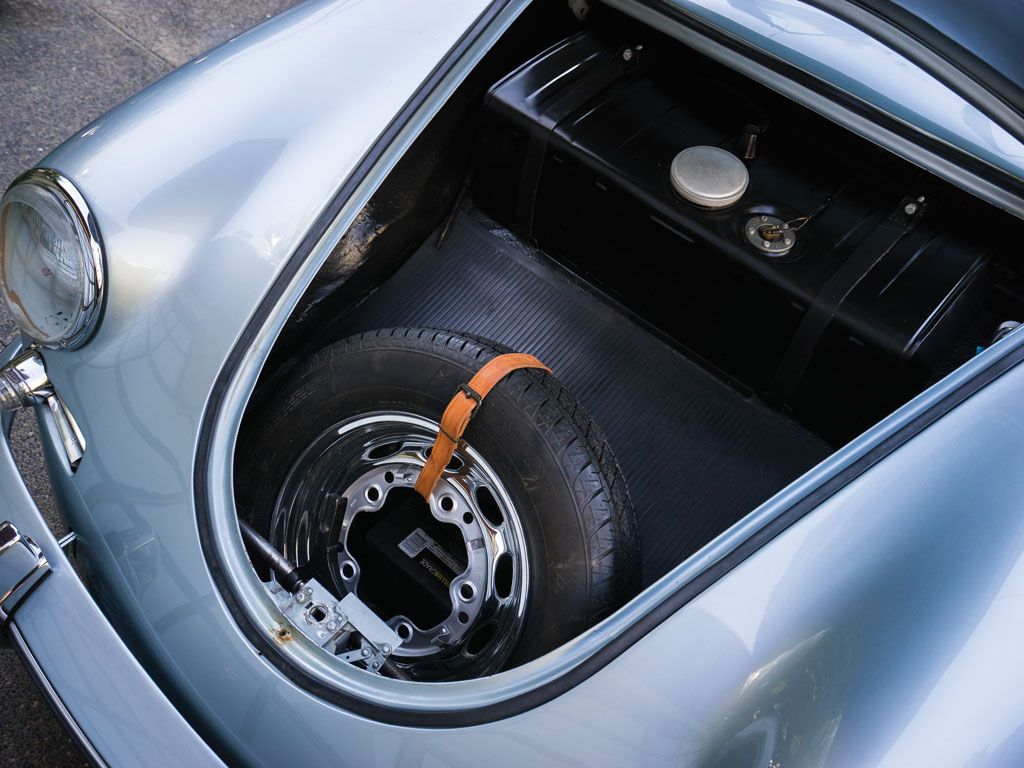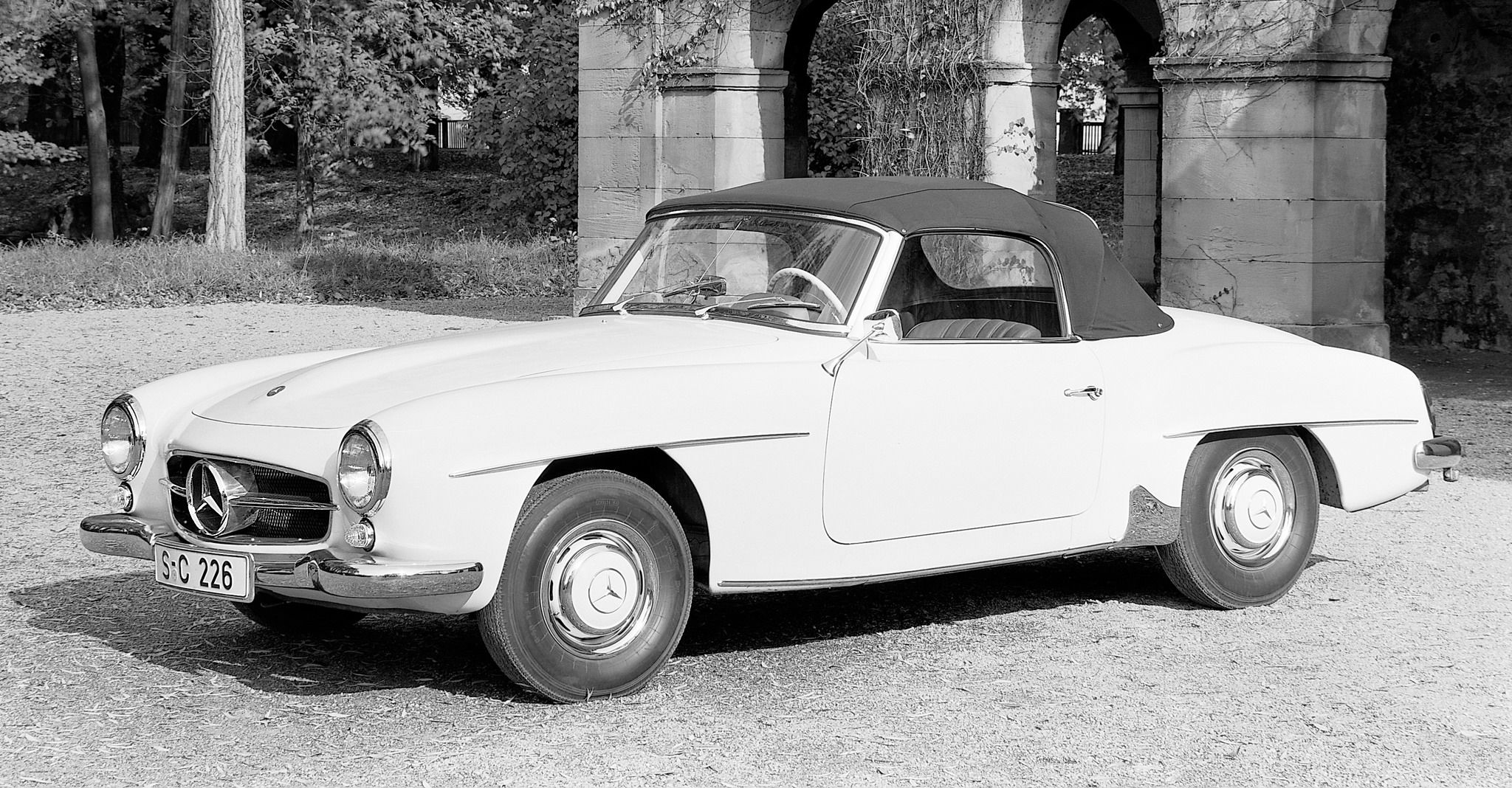The Porsche 356->ke666 was the first production car to wear a Porsche->ke1 badge. Ferdinand Porsche, and his son (also named Ferdinand, but usually called “Ferry”) had been involved in the auto industry for a long time, but Ferry had a vision to make road cars with his family name on them. During WWII he had owned a Volkswagen->ke94 that he had supercharged, and this gave him an idea, that a small car with a reasonable amount of power could be more fun than a big car with a lot of power. Thus the idea for the 356 was born, and the car would grow up along with the company that made it.
Since the 356 was Porsche's first model (debuting in 1948), and it would stay in production for a fairly long period of time, every 356 tells a part of the story of the early years of Porsche. As the most popular variant of the car, the 356B gives us a particularly interesting cross section of company history. The 356 you see here is a 1960 model, notable for being the first of the 356s that would incorporate upgrades that would lead a few years later to the 911.->ke282 Indeed, early 911 sketches were made alongside the plans for upgrading the 1960 356.
Continue reading to learn more about the 1960 Porsche 356 B 1600 Cabriolet.
1960 Porsche 356 B 1600 Cabriolet
- Make: Array
- Model: 1960 Porsche 356 B 1600 Cabriolet
- [do not use] Vehicle Model: Array
Exterior
The body and the mechanical workings of the 356 evolved along different lines and have different alphanumeric designations for each, and you probably thought the current Porsche lineup was confusing. The different generations of the car, if you want to call them that, are generally referred to by their mechanical designation, so this car is a 356B, but it also has a T5 body. The changes from the T1 to the T5 were fairly small and incremental, and the bigger changed happened from the T5 to the T6, and since the 356B came only with T5 or T6 bodies, this is the more important distinction. The T5 has a smaller rear windshield, no visible filler cap in the fender and only one rear engine cover grille to the T6's two.
The design of the 356 was by Porsche employee Erwin Komenda, and it drew on the earlier prewar designs of Ferdinand Porsche, particularly the Type 64 of 1939. But even though the design work for the 356 was done in-house, Porsche was at this point too small a company to actually produce the bodies itself, and this work was done by a German coachbuilder called Reutter. Porsche would go on to buy out Reutter, apart from its seat-making division, which would be renamed Recaro. But in 1960, it was still a “356 by Reutter.”
Interior
Even a modern 911 is not a particularly spacious car, so as you are probably expecting, the 356 in all of its forms wasn't very suited to the particularly tall or rotund. There was a back seat though, and even if it wasn't something you'd want to spend a serious amount of time in, Porsche made a better effort with it than has been made with any number of other sports cars. It is generally a nice interior, a simple but well executed example of mid-century design in an automotive application. The steering wheel is a particularly nice touch, with an inner chrome ring that serves as one of the few purely ornamental touches on the car.
Drivetrain
Like the Volkswagen Beetle, the 356 had an air-cooled, horizontally opposed four-cylinder engine. This has caused a lot of people over the years to write off the 356 as a tarted-up Beetle. This is wrong for a number of reasons, not least of which being that sharing a few design elements is pretty far from actually sharing parts. The engine is probably the best example of this, with even the base model 356B's engine sporting a bigger displacement and more than double the horsepower of the same year's Beetle engine. As the “1600” in the name of the car implies, this is a 1.6-liter engine, and it produces 84 horsepower. There were quite a few different versions of the engine, and those looking to race a 356 had the option to buy one of a few racing “Carrera” engines, with the biggest of these bumping displacement up to 2.0 liters. This bigger engine was also a DOHC design, where the regular engine was using pushrods, and it brought power all of the way up to 130 horsepower.
Like the Beetle and the 911, the 356 was a rear-engine design, although it started life as a mid-engine prototype. This did make them easy to work on, but it does also mean that some of the 911's more notoriously temperamental handling characteristics actually date back to the 356.
Prices
With some 76,000 units produced, the 356 is not a rare car. Certain versions are rare, generally speaking, the high performance versions of the car. These command the highest prices at auctions, and Speedsters and Carreras can fetch in excess of $300,000. This specific 356B is not one of the high performance versions, but despite not being especially rare, regular 356s still manage to do surprisingly well at auction. Another 1960 356B 1600 Cabriolet just sold at auction for $167,200 earlier this year. R Auctions hasn't provided any information about this specific car, but it looks to be a recent restoration, and it would be reasonable to expect it to go for somewhere in that neighborhood.
Competition
Mercedes-Benz 190SL
If you were looking a German convertible sports cars during this period in history, you will have also probably considered the 190SL. Mercedes introduced the car as an entry level car for those that couldn't afford the 300SL. It offered decent performance, but was also easily one of the most stylish cars in its segment. But many of the styling cues came from the 300SL, so this is really no surprise.
Jaguar E-Type
Debuting in 1961, the E-Type came along at a time when the 356 was still the only car in the Porsche lineup. It was an instant hit, incorporating much of the technology that Jaguar had used to dominate Le Mans in the previous decade, as well as some of the best automotive styling of all time. It was as fast as it was desirable, and the fact that it was fairly expensive is the only reason why there continued to be any other sports cars in the world at all.
Read our full review on the Jaguar E-Type here.
Conclusion
It is possible that the 911 ruined the 356 for all of us. The Porsche that replaced the 356 (even though it was never Porsche's intention to do so) has lived on until today, and in doing so has overshadowed pretty much everything else the carmaker has done. This probably has something to do with why people think of it as nothing more than a really expensive Beetle, but the truth is that 356 was a remarkable vehicle in its time. By the mid '60s, bigger horsepower numbers were becoming much more fashionable, as well as attainable, for even the relatively cheap price range that the 356 occupied, and this would spell the end for the 356. But it can still teach us a valuable lesson about how to make the absolute most out of a given platform.

